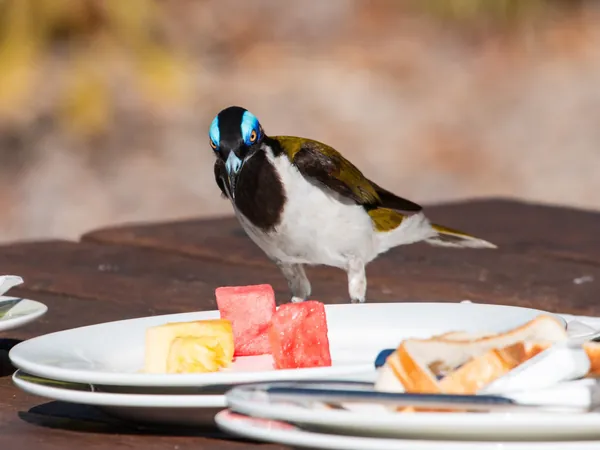
Colorful Birds Thrive in Cities: A Surprising Link to Urban Life
2025-04-07
Author: Jia
A groundbreaking study from researchers at the University of Granada and the Max Planck Institute for Biological Intelligence reveals a fascinating connection between urbanization and the plumage color of birds. Their findings indicate that species well-adapted to city life are surprisingly more colorful and exhibit less brown in their feathers. This research sheds new light on how urban environments influence wildlife, prompting us to rethink the biodiversity crisis facing many species.
The study, published in the prestigious journal Ecology Letters, analyzed data from over 1,200 bird species across various habitats with differing levels of urbanization. The results elucidate a clear trend: in urban settings, birds tend to display elaborate and vibrant colors, diverging significantly from the brown shades typically found in natural habitats. Researchers believe this color distinction arises from diverse environmental factors. For instance, urban areas boast unique structures, reduced foliage, a multitude of artificial backgrounds, and fewer avian predators, altering survival strategies for these birds.
Urbanization, while a key contributor to economic growth, poses serious challenges to ecosystems worldwide and is a leading factor in the dramatic decline of biodiversity. The field of urban ecology investigates these effects, yet the relationship between urbanization and plumage coloration has previously been underexplored.
In this study, led by Bart Kempenaers, the team meticulously examined how plumage color might predict the relative abundance of various bird species in urban landscapes. Remarkably, they discovered that brown birds—which are more commonly found in natural settings—struggle to adapt to urban environments, where they may be at a distinct disadvantage amid the city’s gray palette. Kaspar Delhey, a key author of the research, noted, "The predominant colors of a city and the lack of suitable habitats can determine which bird species thrive there."
Moreover, the study highlights an intriguing aspect of avian biology: successful urban species often boast more vibrant plumage, particularly among females. As urban areas typically have fewer predators, these birds may be less at risk from visibility, allowing them to flaunt their colorful feathers without the same danger they would face in rural areas.
Past research suggested that color diversity within urban bird communities was limited, but this new study challenges that notion. Juan Diego Ibáñez-Álamo, the first author, clarified: "While there are fewer species in urban areas than in rural habitats, the bird communities in cities display greater color diversity when we account for this discrepancy."
As cities continue to expand, the implications of these findings become critical. Understanding these color dynamics may provide crucial insights into biodiversity conservation strategies in urban settings, highlighting the adaptability of birds and the potential for vibrant life amid concrete landscapes. This study not only encourages a closer look at urban wildlife but also prompts questions about how urban planners can design environments that support such biodiversity. Can we create future cities that serve as havens for colorful avian life? The answers lie in the colorful skies above our urban jungles.


 Brasil (PT)
Brasil (PT)
 Canada (EN)
Canada (EN)
 Chile (ES)
Chile (ES)
 Česko (CS)
Česko (CS)
 대한민국 (KO)
대한민국 (KO)
 España (ES)
España (ES)
 France (FR)
France (FR)
 Hong Kong (EN)
Hong Kong (EN)
 Italia (IT)
Italia (IT)
 日本 (JA)
日本 (JA)
 Magyarország (HU)
Magyarország (HU)
 Norge (NO)
Norge (NO)
 Polska (PL)
Polska (PL)
 Schweiz (DE)
Schweiz (DE)
 Singapore (EN)
Singapore (EN)
 Sverige (SV)
Sverige (SV)
 Suomi (FI)
Suomi (FI)
 Türkiye (TR)
Türkiye (TR)
 الإمارات العربية المتحدة (AR)
الإمارات العربية المتحدة (AR)